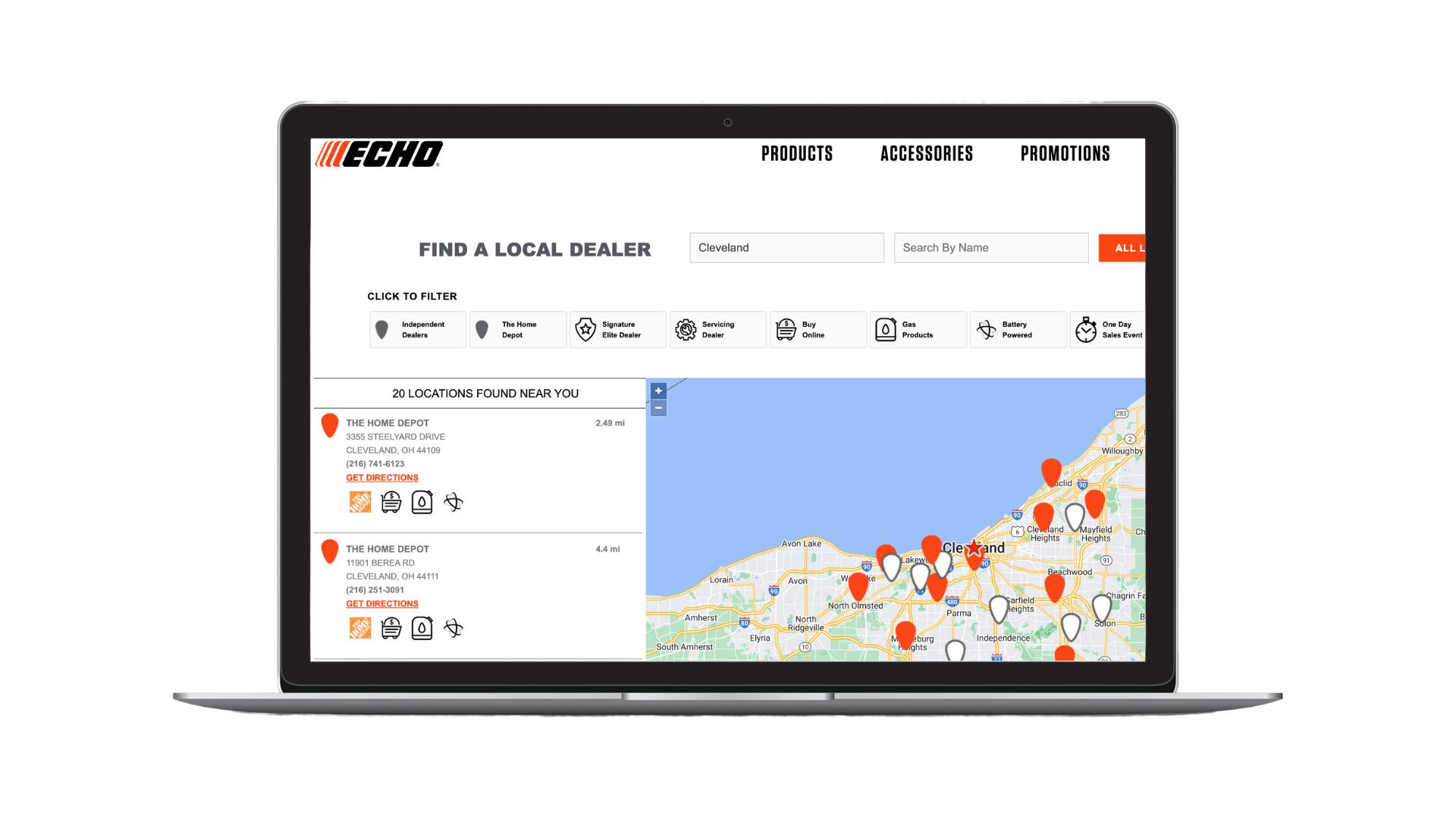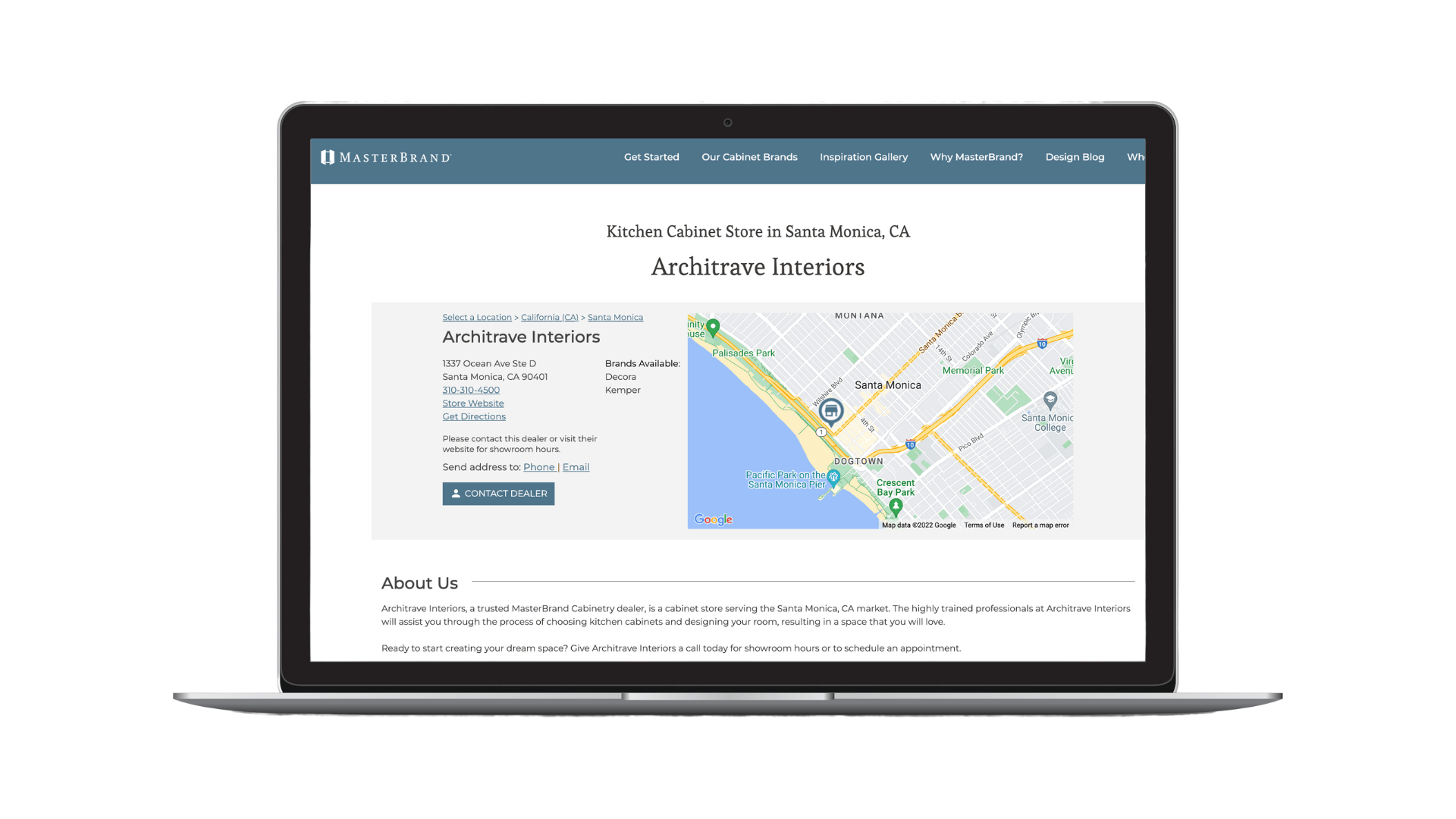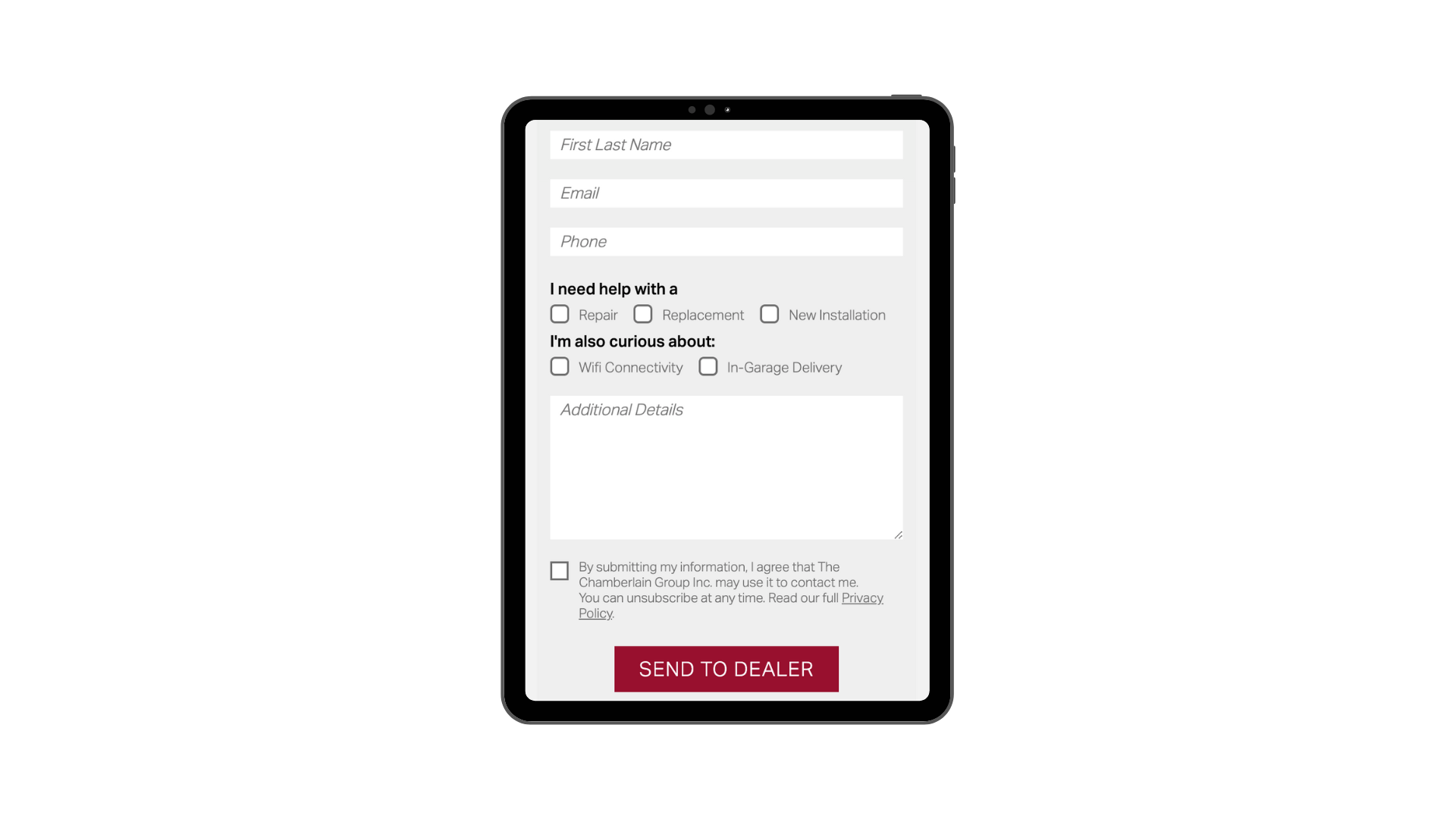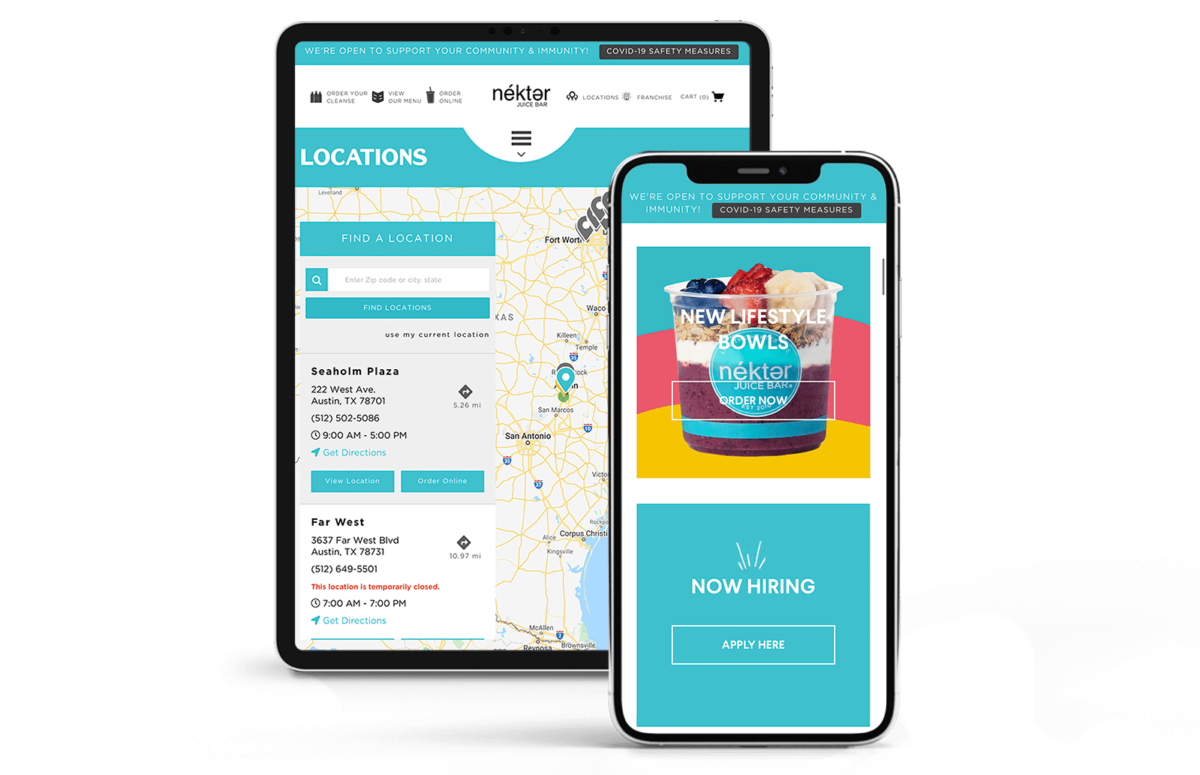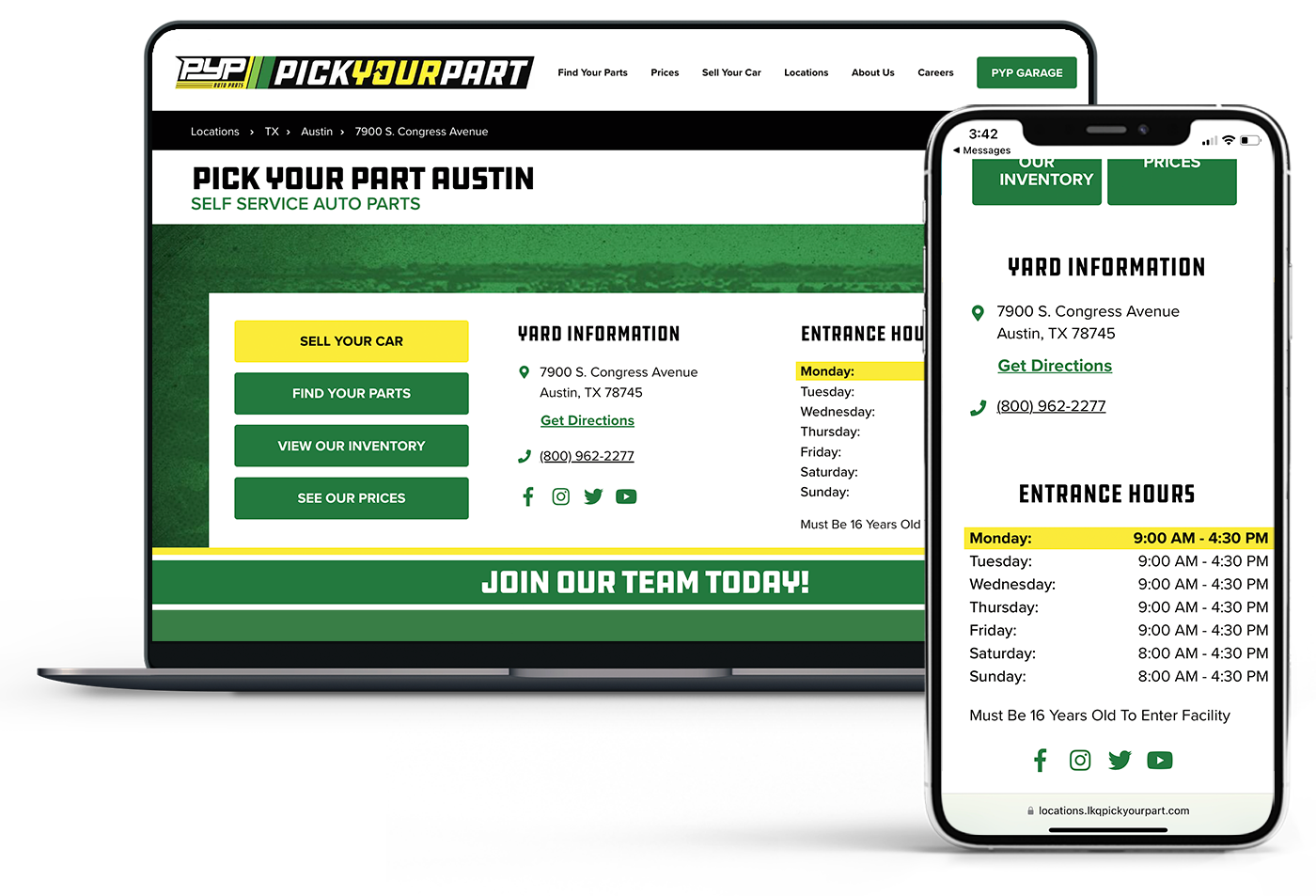How Distributor Brands Can Enhance the Buyer Experience With Local Pages and Locators
As a distributor brand, you face a unique challenge. You must attract consumers to your national or global brand and drive them to your independent distributors, dealers, big box stores, and more.
When you optimize your local engagement, you drive more customers to your dealers and your products. One way to improve local engagement, organic search, and customer experience (CX) is through local pages and locators. Both offer an enhanced where to buy experience that reduces friction on the path to purchase for your customers.
In this blog, we’ll explain what local pages are and how they keep customers from bouncing to dealers’ web pages — which often include your competitors’ products. We’ll also discuss dealer locators and how they improve CX and lead generation.
Let’s get started!
What is a Dealer Locator
Table of Contents
A dealer locator, also known as a where to buy locater, is a web page or section on a website that displays valuable information and unique details about each location where a brand’s products are sold. Brands need dealer locators to help online shoppers find where their products and services are sold. Locators are often linked to your local pages, which we’ll get into later. Below, you’ll find an example of a dealer locator.
From a more technical perspective, locators often have the following capabilities and offer these user experience (UX) benefits:
- Geocoding (converting addresses into geographic coordinates)
- Driving directions
- Real-time updates
- Enhanced product filtering and sorting
- Location data management
- Product searching
- Mobile-first design
- Event or coupon integration
- International or multi-lingual support
Benefits of a Locator
Locators benefit brands in several ways. The two primary ways are improving the UX and CX and driving more online and in-person traffic to the locations where your products are sold.
Store locators don’t just provide online visitors with local business locations’ addresses, they also help move website visitors through the customer journey. Locators improve conversion rates by keeping customers on your website and focused solely on your products and brand.
A bad locator journey moves users off your website, out of your brand experience, and onto another dealer or retailer’s homepage, which disrupts their viewing of your brand’s product and likely has competitors’ products on it as well.
Here are some other key benefits of locators:
- Increase organic search rankings and website traffic
- Drive more traffic to local pages
- List both independent dealers and retailers
Your locator works hand-in-hand with your local pages, which we’ll discuss next!
What are Local Pages?
Local pages, also referred to as local landing pages, are individual web pages attached to one business listing or location. They help consumers find pertinent information about that specific business location.
Well-optimized and maintained local pages help brands penetrate local markets by ranking high on search engines and improving your business’s UX, which leads to a shorter buyer journey and more sales.
The 7 Best Ways to Optimize Your Local Pages
Below are seven ways marketers can improve their local pages and locator.
1. Incorporate Keywords
One of the ranking factors for Google, and other search engines, are keywords. Therefore, when drafting local pages you need to consider relevant local and industry keywords.
Consider what keywords your target audience is searching for to find your products or services. Also, combine these keywords with local keywords, such as your city, neighborhood, or state. For instance, if your company produces lawn equipment, including variations of “lawn equipment” along with the location of the retailer or distributor is a must.
These keywords should appear in your title tag, which is an HTML element that identifies a web page’s title. Additionally, include your keywords in your local listings and local pages’ copy.
2. Employ an SEO Strategy
SEO (search engine optimization) is the process of improving your website and local pages to increase visibility on Google and other search engines when people search for specific terms or keywords.
There are four main ways to optimize your local landing pages for search engines through on-page SEO, including updating meta descriptions, URL structures, alt text on images, and internal links. We’ll explain how to optimize each of these below:
- Meta descriptions: A meta description is a 50-160 character hook that entices the reader and appears below your title on the search engine results page (SERP). You can update your local landing page’s meta description in your content management system.
- URL structure: Local landing page URLs should be clean. Meaning, a URL that uses natural language and is easy for humans to read. Include location-based keywords in your URL structure, such as your city or neighborhood.
- Alt text: Alternative or “alt” text provides a text description for your images, which makes it easier for search engines and visually impaired consumers to understand the content of your image. You should write alt text as if you’re describing an image to a visually impaired person. Ensure all current and future landing page images contain well-written alt text.
- Internal links: Internal links are links from one page on your site included on another internal page. You should add relevant internal links across your entire website, but especially your local pages. These links can be for products, services, home pages, blog posts, and guides.
If you want more tips on how to improve your organic search, download our guide on the Top 10 Things You Should Be Doing in Local SEO Now.
3. Update Business Information
Local pages improve your user and customer experience by making it simple for consumers to find the information they’re looking for about your retailers or dealerships.
However, this consumer ease only happens if your local pages contain up-to-date and accurate information. Your local pages should include, but not be limited to:
- Location hours
- Business address
- Contact information
- Products or services
- An interactive map
- Local promotions or events
- High-quality images of the local business
- An about us or mission statement
- Links to social media accounts
Here’s an example of MasterBrand Cabinets’ dealer local page for Architrave Interiors.
As you can see, it contains many of the above-mentioned details that consumers are searching for, such as an interactive map, dealer hours, address, contact information, and an “about us” section.
4. Ensure Consistent Messaging and Branding
When you have 100s or 1,000s of local pages, you want to maintain consistent branding and messaging across the board.
All local pages should have a similar brand identity, page structure, and messaging. In terms of messaging, ensure that you have a writing style guide that covers details, such as tone of voice and punctuation. For branding, ensure your brand guidelines cover fonts, spacing, colors, and images to use.
The more consistent your visuals and voice are on your local pages, the better!
5. Include CTAs
On your local pages, you want to include relevant calls to action (CTAs). These CTAs will help keep customers on your website and are a tactic to convert leads. For instance, if you’re a distributor brand, have a “Visit Website” button on your local page or a “See Related Products” button that links to your product page.
You can also have a lead form that asks for the consumer’s contact information and requests details about their needs. Here’s an example lead form from a LiftMaster local page.
6. Be Mobile Friendly
Fifty-seven percent of users say they won’t recommend a business with a poorly designed mobile site. Your locator and local pages need to be mobile-friendly.
Mobile-friendly local pages are fast-loading, responsive, and have a clean display. You can use Google’s Mobile-Friendly Test page for free to ensure your locator and local pages look good and work accordingly on mobile.
Make Updating and Optimizing Your Local Pages and Locator Easy
As a marketer, you know the importance of having and optimizing your retail locator and local pages. If you’re having difficulty creating and managing your locator and local pages at scale, SOCi can help!
SOCi Local Pages and Locator services will help elevate your brand and dominate organic search. With SOCi, you can easily make real-time edits and updates to your local pages and locator.
Most importantly, SOCi Local Pages and Locator are built for lead generation. You can showcase location-specific content, allow appointment booking and online orders, and leverage lead capture forms. Read our ECHO-USA case study to learn how ECHO-USA increased its page views by 152 percent with the help of SOCi.
For more information on SOCi Local Pages and Locator and how SOCi can help you dominate your marketing, request a demo today!
